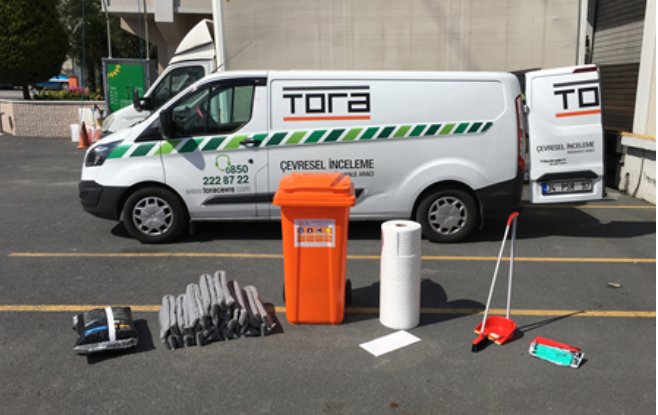19.11.2019 Istanbul
Spill Kits
Spill sets consist of absorbent materials of different sizes (absorbent pad, powder absorbent, absorbent sausage, etc.) to prevent the access of chemicals to possible receiving environments, i.e. soil, subsurface or surface waters. Where chemicals are stored, hazardous liquid wastes are found, etc. It is recommended that chemicals be present at all points where there is a risk of spillage, leakage and spread. Its purpose is to trap the spill by volume and prevent the chemical from reaching the soil, drainage channel, surface and subsurface water, in short, the receiving environments. Different absorbents and absorbents need to be used for different types of chemicals. For example; Absorbent pads do not work for cleaning oil-based (gasoline, vegetable oil, etc.) chemicals. For chemicals containing undesirable hydrocarbons, dust absorbents containing bacteria are considered a more suitable cleaning material.
Most commercially available spill kits are designed for relatively small volumes (approximately 500 L). (EPA SPCC Guidence, December 2013)
According to Turkish Legislation;
Although the definition of spill kit is not exactly mentioned in our regulations, Article 118 of the Regulation on Fire Protection of Buildings states that “Spilled flammable liquid is prevented from leaking into wastewater pits, canals, pipes and pipe and plumbing ducts.”
Likewise, in the Guide to Safe Storage of Chemicals published by the Ministry of Labor and Social Security in 2011, information was provided on how to intervene in spills and to prevent dangerous liquids (chemicals) from reaching the receiving environments.
According to the EPA;
The EPA’s SPCC Guidelines provide details on what materials should be included in Spill Kits, a plan of the locations that should be available in an average facility, and other requirements.
According to the SPCC Guideline, in an average plant, production hall, chemical, raw material and waste storage areas, around tank yards, etc. It is stated that in locations where there is likely to be a chemical leak, there should be a spill kit and a hazardous waste bin for contaminated absorbents. It is also stated that a plan specifying the locations of the spill kits should be included in the Emergency Plan.
It is stated that the current uses and deficiencies of the spill setsshould be determined with monthly checks.
